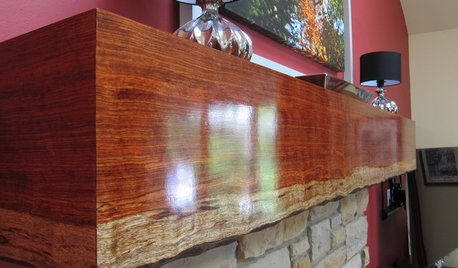varnish vs. polyurethane question
newhomeownerco
18 years ago
Related Stories

GREEN BUILDINGConsidering Concrete Floors? 3 Green-Minded Questions to Ask
Learn what’s in your concrete and about sustainability to make a healthy choice for your home and the earth
Full Story
FURNITURESmart Shopper: How to Judge Antique Furniture Quality
Pick the treasures from the trash without expert experience by learning how to evaluate antiques and what questions to ask
Full Story
WALL TREATMENTSPick the Right Paint Finish to Fit Your Style
The question of finish may be as crucial as color. See which of these 9 varieties suits your space — and budget
Full Story
REMODELING GUIDESPro Finishing Secret: Aniline Dye for Wood
Deeper and richer than any stain, aniline dye gives wood stunningly deep color and a long-lasting finish
Full Story
CEILINGSAdd a Touch of Elegance With a Ceiling Medallion
Installed with adhesive and often less than $100, this decorative detail makes an impact
Full Story
MOST POPULARThe 25 Most Popular Photos Added to Houzz in 2013
See the newly uploaded images of kitchens, bathrooms, bedrooms and more that Houzz users really fell for this year
Full Story
HOUSEKEEPINGHow to Clean Hardwood Floors
Gleaming wood floors are a thing of beauty. Find out how to keep them that way
Full Story
FLOORS11 Distinctive Finishes for Original Floorboards
Whether you go for glossy, painted or matte boards, make your wood floor the star
Full Story
DECORATING GUIDESDesign Dilemma: I Need Lake House Decor Ideas!
How to Update a Lake House With Wood, Views, and Just Enough Accessories
Full Story
DECORATING GUIDESMantel Makeover: From Builder's Grade to Live-Edge Wood
See how an all-wrong mantel became a gorgeous fireplace focal point at the hands of an interior designer and her carpenter
Full StoryMore Discussions










Jon1270
newhomeownercoOriginal Author
Related Professionals
Billings Cabinets & Cabinetry · Glendale Heights Cabinets & Cabinetry · Frankfort Carpenters · North Miami Beach Carpenters · Pickerington Carpenters · Plainfield Carpenters · Bellevue Flooring Contractors · Bend Flooring Contractors · Boca Raton Flooring Contractors · Cottage Lake Flooring Contractors · Lewisville Flooring Contractors · Oxford Flooring Contractors · Scottsboro Flooring Contractors · Carlsbad Furniture & Accessories · Kingsburg Furniture & Accessorieschiefneil
User
waltfromtroy
Bill_Wilson
Dadudleyboyz_aol_com